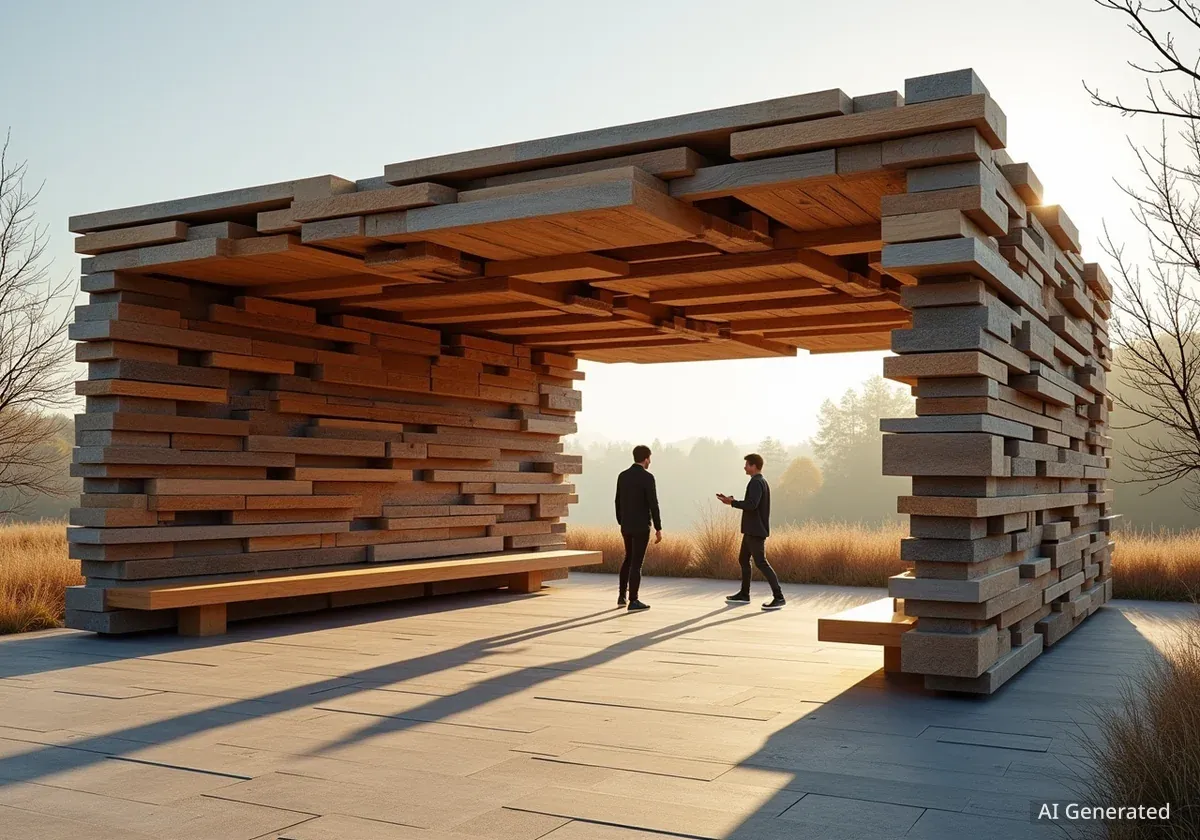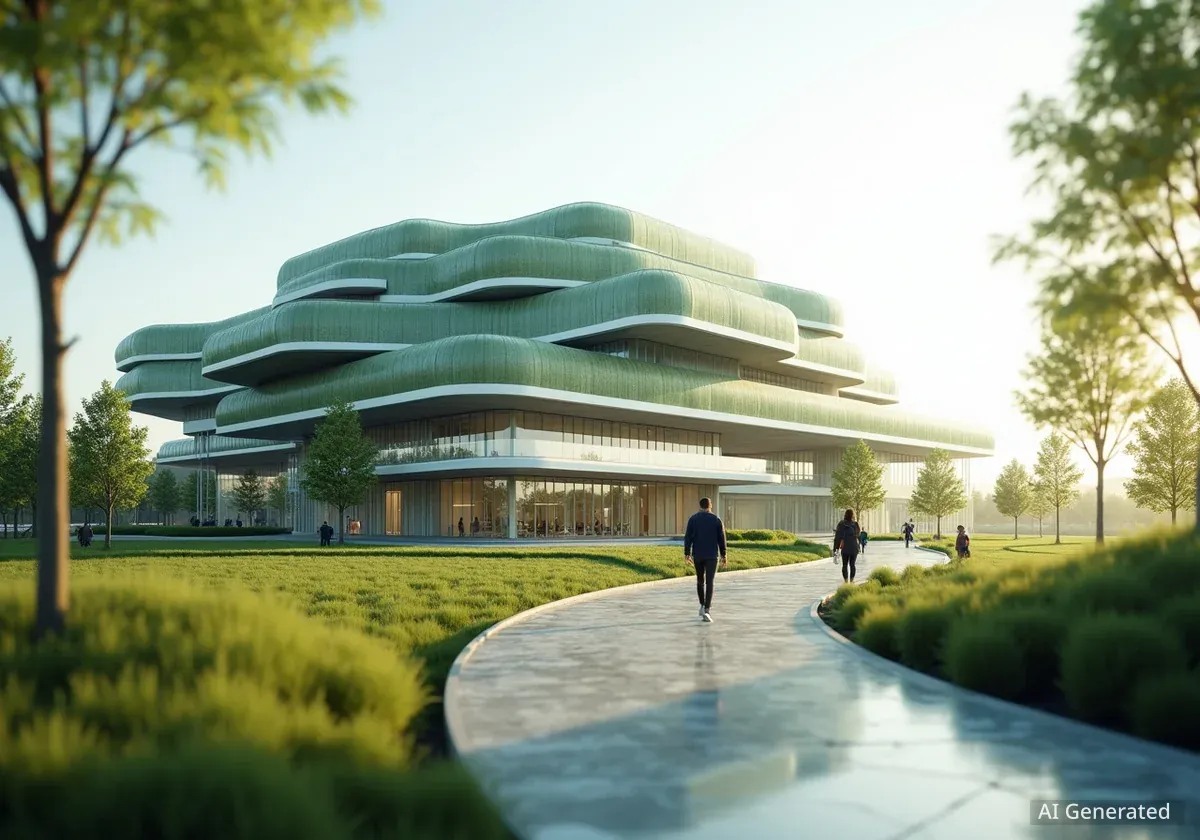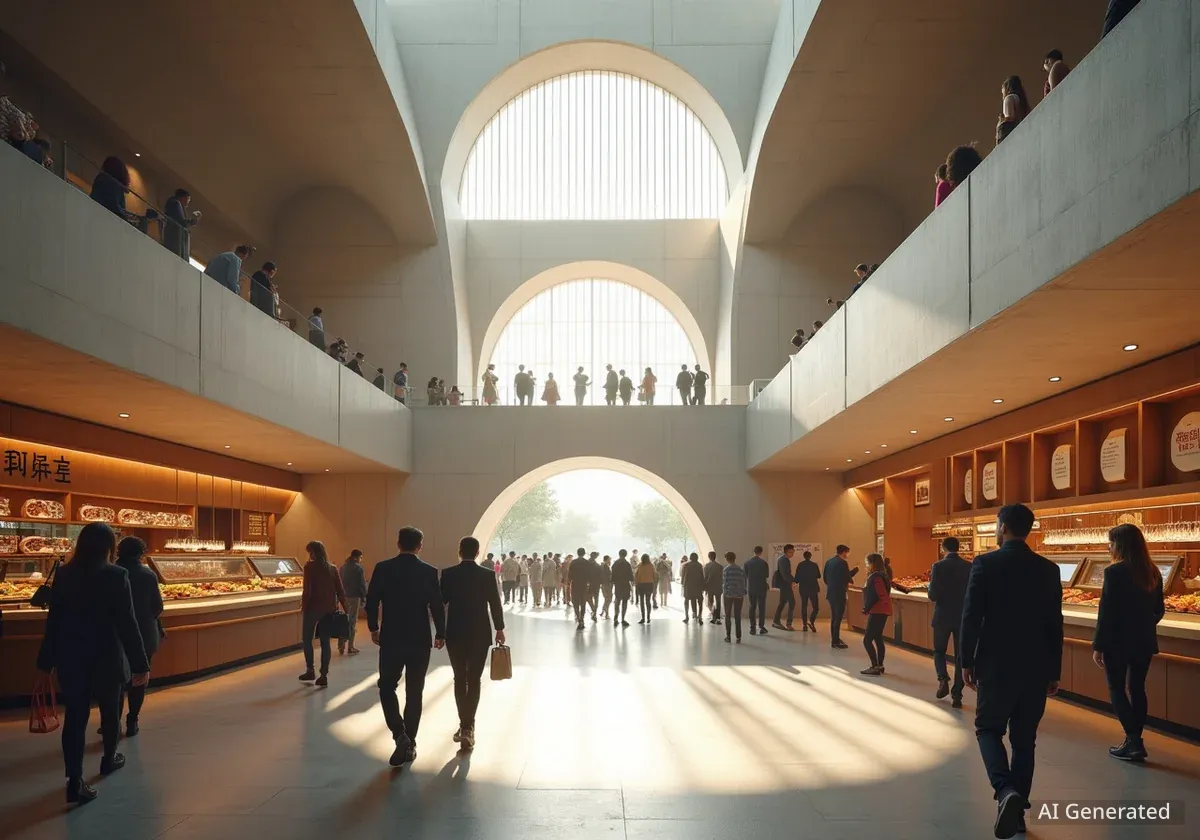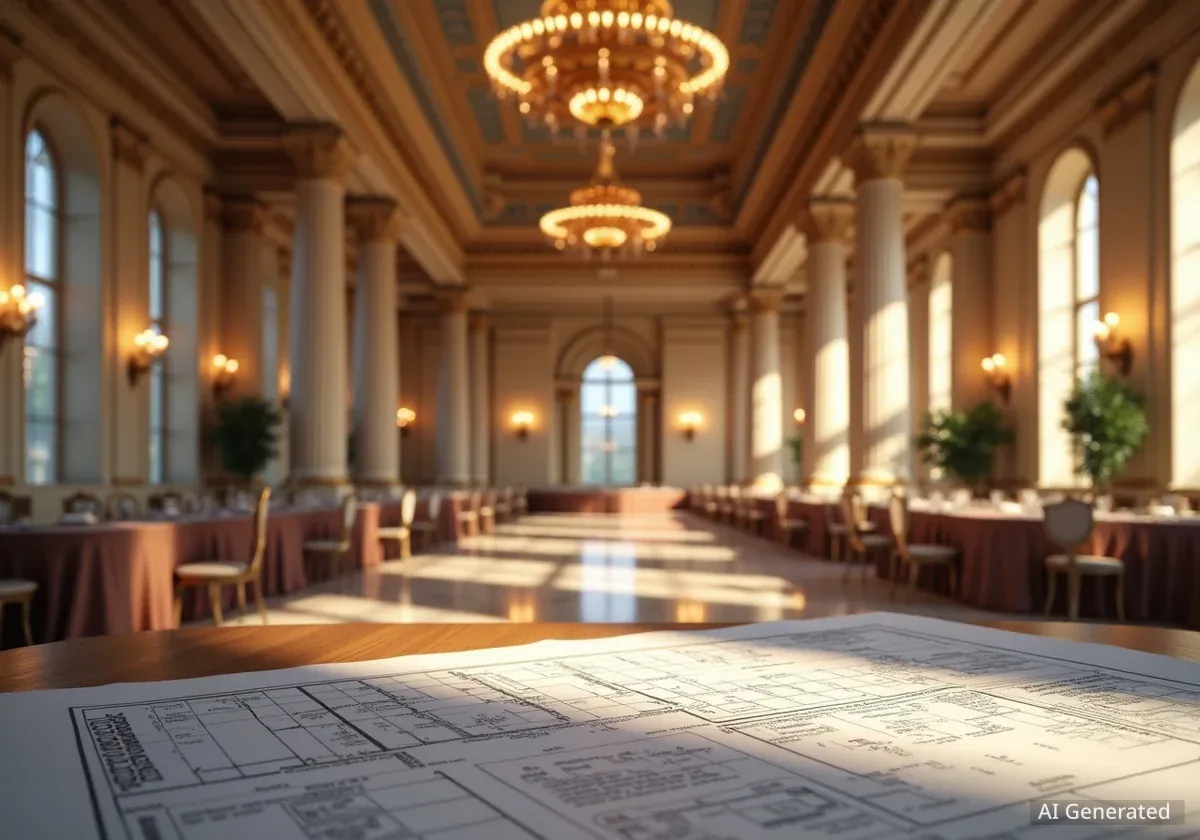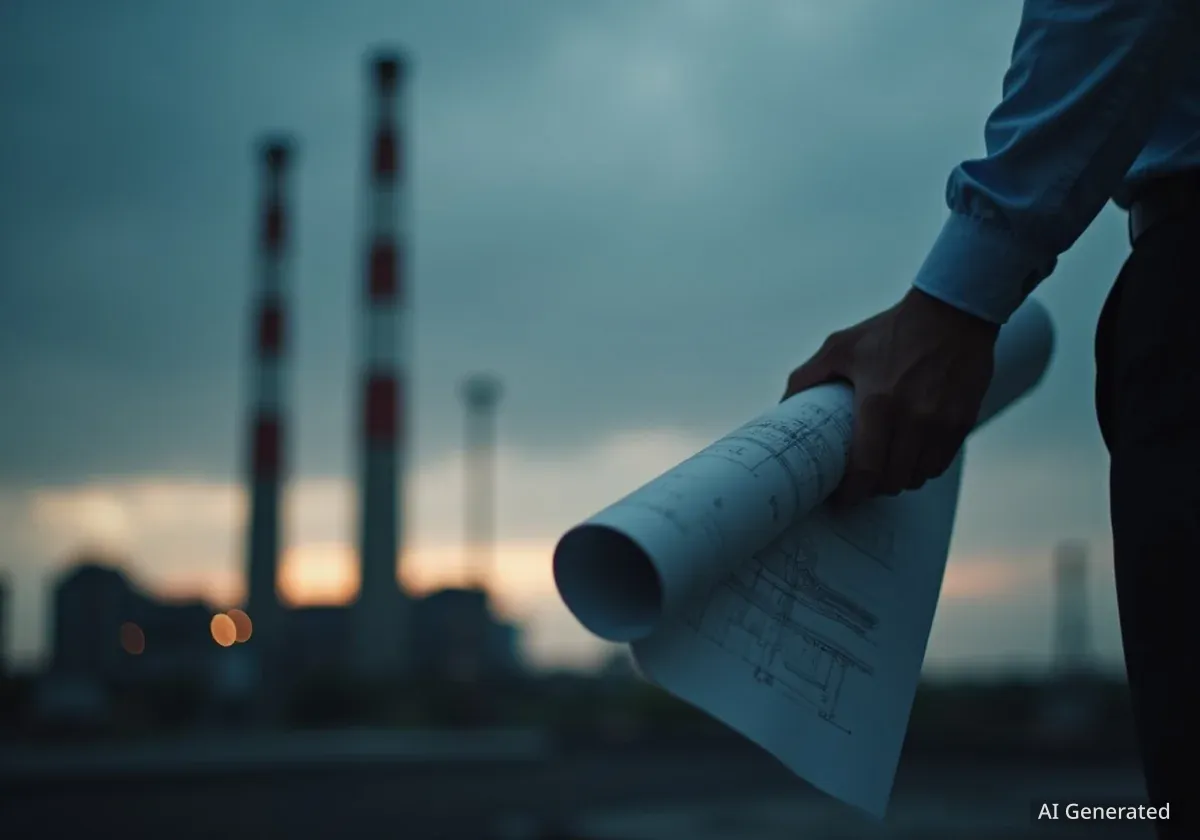A new pavilion, called Barn Again, has opened at the Copenhagen Architecture Biennial. It uses weathered wood salvaged from old farm buildings in Norway. Designed by THISS Studio and architectural designer Tom Svilans, the structure aims to provide a quiet space for the public. It also highlights the potential of using reclaimed materials in new construction projects.
The pavilion is located at Gammel Strand in Copenhagen. Its materials were saved from disused barns and landfill sites. Without this project, the wood would likely have been burned. This approach directly supports the biennial's theme of 'Slow Down,' which encourages sustainable practices in architecture.
Key Takeaways
- Barn Again pavilion uses reclaimed wood from Norwegian barns.
- It offers a meditative space at the Copenhagen Architecture Biennial.
- The project emphasizes the value of existing building materials.
- The pavilion will be dismantled and repurposed after the event.
Showcasing Sustainable Building Materials
THISS Studio and Tom Svilans designed Barn Again to demonstrate that many building materials already exist. These materials, often overlooked, possess significant structural and aesthetic value. The project challenges the traditional view of new construction requiring only new resources.
According to THISS Studio co-founder Tamsin Hanke, "The building materials that we need to build now already exist, and we need to find them and work with them." She shared this view during the pavilion's opening. This statement underlines the core message of the installation.
Fact: Material Origin
The wood for Barn Again was sourced from disused barns and landfill sites in Norway, preventing it from being incinerated.
A Meditative and Cocooning Environment
The reclaimed wood boards have unique textures. These marks come from years of weathering and human use. They tell a story of their past lives. Tom Svilans noted, "You'll see markings from when they were originally made with what they call the carpenter's marks, and all sorts of little details that tell their story from who knows what past they've had."
The boards are arranged in an overlapping, stepped pattern. This creates a tunneling roof and a cocoon-like shape. This design reflects how the wood was delivered from Norway, stacked in layers on palettes. The aim is for visitors to feel a sense of calm and escape from city noise.
"Spatially, it will feel like a real moment of pause to the city, because you're surrounded by all this timber, all this history," said Sash Scott, co-founder of THISS Studio. "It's going to be a very, very calming space. It's going to smell great, it's going to feel great."
Scott expressed hope that visitors would use the space for quiet reflection. He encouraged them to consider the long life of each piece of timber.
The Slow Pavilions Initiative
Barn Again is one of two 'Slow Pavilions' chosen for the Copenhagen Architecture Biennial. These structures were selected through an open call. The call sought designs that responded to the biennial's 'Slow Down' theme. This theme promotes thoughtful and sustainable architectural practices.
The other pavilion is 'Inside Out, Downside Up' by Slaatto Morsbøl. This structure also uses reclaimed materials, including perforated bricks. Both pavilions highlight the biennial's commitment to showcasing innovative uses of existing resources.
Biennial's Mission
The Copenhagen Architecture Biennial, directed by Josephine Michau, aims to offer solutions to global challenges intensified by the built environment. Michau describes their approach as 'soft activism,' pushing for change through design and awareness.
Future of the Pavilion
After the biennial concludes, Barn Again will not be discarded. Instead, it will be carefully dismantled and repurposed. The exact new location is still unknown. THISS Studio views this as a temporary interruption in the material supply chain.
Tamsin Hanke explained, "This is just a storage until it goes through to its next site." This commitment to future use underscores the project's focus on circular economy principles. It ensures the materials continue their lifecycle, avoiding waste.
Copenhagen Architecture Biennial: A Call for Activism
The Copenhagen Architecture Biennial runs from September 18, 2025, to October 19, 2025. It is organized by the Copenhagen Architecture Foundation (CAFx). Director Josephine Michau stated that the event seeks to address global issues worsened by construction and urban development.
Michau emphasized the need for action. "It's time for activism," she said. This biennial is not just an exhibition; it is a platform for advocating sustainable change in the architecture sector. The pavilions serve as tangible examples of how this change can begin.
- The biennial showcases various sustainable building methods.
- It encourages public engagement with architectural concepts.
- The event promotes discussions on environmental impact.
Other notable sustainable projects include a cob structure at the V&A made from HS2 excavation mud. Another is a colorful bandstand by Charles Holland and RASKL. These projects, like Barn Again, demonstrate diverse approaches to using reclaimed or low-impact materials.
Photography for Barn Again was provided by Maja Flink. The biennial invites architects, designers, and the public to explore new ideas for a more sustainable future. It highlights practical applications of environmental responsibility in design.

